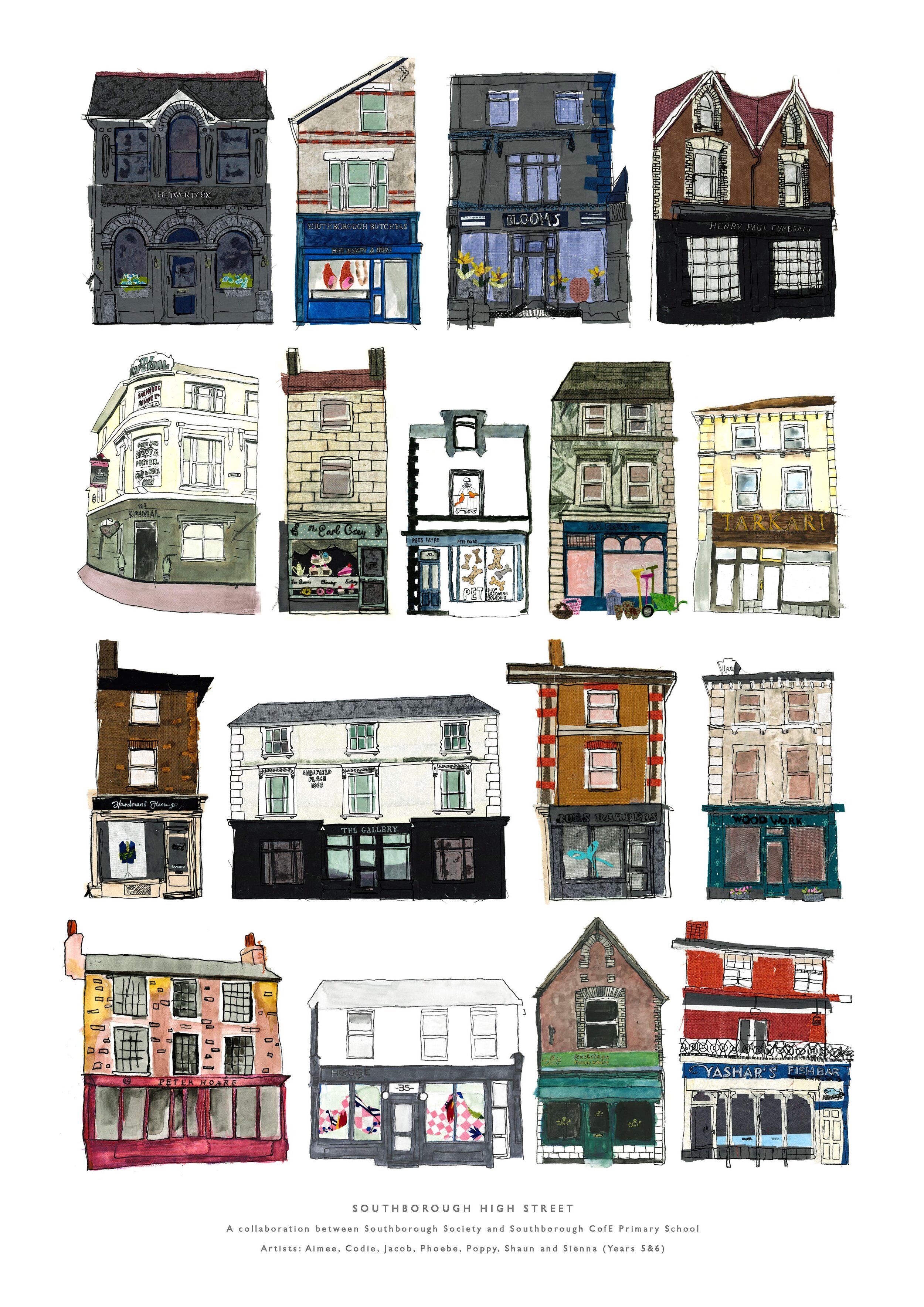With Christmas fast approaching, we hope the designs of the two Christmas cards the Society is producing and selling as a fundraiser this year will put you in the festive spirit!. Both designs feature Southborough scenes and you may also be pleased to hear that the cards have been printed in High Brooms, by our excellent printers at BDP Media. All very appropriately local!
Come and see us at our stall at the Winter Fayre on Saturday, 9th December, 1pm - 6pm, to make a purchase. We will be selling the cards in pack of ten for £8.95 or individually for £2.00 each. However, there will be limited numbers. If you would like to guarantee your cards, you can pre-order (packs only) using the form on the link here.
Orders must be received by Sunday, 26th November.
We expect the cards to be ready for collection from about the 1st December (we will email you to let you know to confirm this as soon as they are ready) and they can be collected from The House Company, 35 London Road, Southborough.
‘Christmas Greetings’, 1936.
‘Christmas Greetings’, a reproduction of a card kept in the Society archive.
A beautiful, stylised card that was likely to have been originally created from a lino or woodcut design, based on a snowy St Peter’s scene. It was originally sent by Major Eric Ruffell and his wife in 1936, living at 15 Chestnut Avenue at the time. Their house was called “Conkers”, which must have raised a smile in passers-by.
The message in Ruffell’s card reads, Christmas, 1936. The joy of Christmas is increased by the remembrance of our friends. May happiness and good fortune be with you. From Major & Mrs. Eric Ruffell. “Conkers,” 15, Chestnut Avenue, Southborough.
Inscription inside the card.
Eric Ruffell was born in 1897, to a family which ran a jeweller’s shop in Tunbridge Wells High Street. He attended Skinners’ School and it is thanks to a website, in memory of ex- Skinners’ boys who fought in the World Wars, that we know a little about him. Ruffell joined the Royal Garrison Artillery in 1915, as a Second Lieutenant. He was just 18 on joining. He was part of a tide of young men who went to war immediately after leaving their grammar schools or their public schools. Unlike so many, he survived and lived until 1966. By 1917, Eric Ruffell had been awarded the Military Cross and by November of that year he had been made a Major, aged 20. You can find out more about Ruffell on the Imperial War Museum website here.
In later life, when settled in Southborough, Major Ruffell became involved in community life. He acted as Chair of the Urban District Council and also became President of the Southborough Trade and Improvement Association.
‘Hilly Fields Under Snow’ (1967)
by Ralph Usherwood (reproduced with kind permission of the Usherwood family)
A view painted repeatedly by Usherwood in his many years spent living in Southborough.
This wintry scene, showing the spell-binding power of snow to transform the landscape, was executed in gouache, watercolour and ink. Usherwood’s preferred medium was watercolour and ink; he painted from life in all weathers and all seasons.
Usherwood working in the snow.
Ralph Dean Usherwood was born at West Wickham, Kent, in 1911, the son of a schoolmaster. He showed artistic promise at a young age. His joy in painting became a lifelong passion and had a profound influence on his career. After university he was employed as a typographer at The Cloister Press, Manchester, but he really found his feet at the BBC. He was Art Editor of the Radio Times from 1951 to 1960.
Ralph and his wife Hilda brought up their family in Southborough. He was an active member of St. Thomas’ Church and involved in the local community. Ralph died on January 2nd, 2000, just two days into the new millennium. His artwork lives on, strongly communicating the joy he found in painting. He is commemorated by a Southborough Society plaque at his former Pennington Road home.
(For more about this exceptional local artist see the Southborough Society Newsletter, February 2022).
We hope you have enjoyed finding out more about our two Christmas card designs this year. By purchasing our cards you will be supporting a local charity and a local business. If you are interested in the work we do at the Society, please consider joining us!
Membership is from just £12 per year or £15 for a family and you will receive high quality quarterly newsletters packed full of local history, nature notes, events and much more. If you would like to join, just fill in the form here and we will get back to you!

















